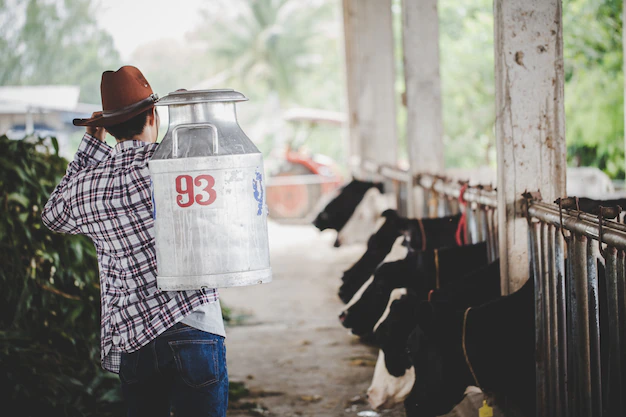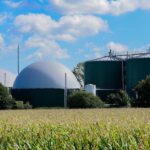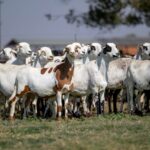Running a profitable dairy farm in South Africa requires a detailed and strategic approach encompassing equipment, land size, infrastructure, revenue, costs, risks, strategy, efficiency, productivity, market dynamics, financial management, growth, investment, funding, and strategic planning. Here’s a comprehensive guide to help you navigate the complexities of dairy farming for profitability.
Equipment
Investing in the right equipment is crucial
for a profitable dairy farm. Essential equipment includes:
- Milking Machines: Modern automated milking systems to increase efficiency and reduce labor costs.
- Cooling Systems: Milk cooling tanks to preserve milk quality.
- Feeding Equipment: Automated feeders to ensure consistent and balanced nutrition.
- Health Monitoring Systems: Equipment to monitor the health of cows, including temperature and activity trackers.
- Tractors and Loaders: For handling feed, manure, and other farm tasks.
- Water Systems: Efficient watering systems to ensure cows have constant access to clean water.
Land Size
The size of the land is a critical factor in dairy farming:
- Grazing Land: Sufficient pasture land is needed to support grazing, which reduces feed costs.
- Crop Land: Land for growing feed crops can further reduce expenses.
- Expansion Space: Space for future expansion of herd size and infrastructure.
Infrastructure
Proper infrastructure is essential for efficient operations:
- Barns and Shelters: Comfortable housing for cows to protect them from extreme weather conditions.
- Milking Parlors: Efficiently designed milking parlors to streamline the milking process.
- Storage Facilities: For storing feed, equipment, and milk.
- Waste Management Systems: Proper systems for handling and recycling manure.
- Access Roads: Well-maintained roads for easy transport of milk and supplies.
Revenue
Revenue streams for a dairy farm include:
- Milk Sales: The primary source of income.
- Value-Added Products: Cheese, yogurt, butter, and other dairy products.
- Breeding Stock Sales: Selling high-quality calves and cows.
- Manure Sales: Selling manure as fertilizer.
- Agri-Tourism: Offering farm tours and dairy experiences.
Costs
Managing costs is vital to maintaining profitability:
- Feed Costs: The largest expense; can be reduced by efficient grazing and growing own feed.
- Labor Costs: Wages for farm workers and milking staff.
- Veterinary Costs: Regular health checks and vaccinations.
- Utilities: Electricity and water.
- Maintenance Costs: Upkeep of equipment and infrastructure.
Risks
Dairy farming comes with several risks:
- Market Fluctuations: Changes in milk prices can impact revenue.
- Disease Outbreaks: Can decimate herd and affect milk production.
- Weather Conditions: Extreme weather can affect feed availability and cow health.
- Regulatory Changes: New laws and regulations can impact operations.
Strategy
A well-defined strategy ensures long-term success:
- Market Research: Understand market demands and trends.
- Diversification: Diversify income sources to spread risk.
- Quality Focus: Prioritize quality to build a strong brand.
Efficiency
Improving efficiency can significantly enhance profitability:
- Automation: Use automated systems for feeding and milking.
- Streamlined Processes: Optimize farm processes to reduce waste and save time.
- Energy Efficiency: Implement energy-saving measures to reduce utility costs.
Productivity
Maximize productivity to ensure high yields:
- Breeding Programs: Use selective breeding to improve herd quality.
- Nutrition: Provide balanced and high-quality feed.
- Health Management: Regular health checks and prompt treatment of illnesses.
Market
Understanding and responding to market dynamics is crucial:
- Consumer Preferences: Stay attuned to consumer trends and preferences.
- Distribution Channels: Establish reliable distribution channels for milk and dairy products.
- Branding: Build a strong brand to differentiate your products.
Financial Management
Effective financial management ensures sustainability:
- Budgeting: Create and adhere to a detailed budget.
- Record Keeping: Maintain accurate financial records.
- Cost Control: Regularly review expenses and find ways to reduce costs.
Growth
Plan for long-term growth:
- Expansion: Gradually increase herd size and infrastructure.
- Product Development: Introduce new dairy products.
- Market Expansion: Explore new markets locally and internationally.
Investment
Invest strategically to enhance operations:
- Infrastructure: Invest in modern and efficient infrastructure.
- Technology: Adopt the latest farming technologies.
- Training: Invest in training for staff to improve productivity and efficiency.
Funding
Access to funding is crucial for capital investments:
- Government Grants: Explore government grants and subsidies for dairy farming.
- Bank Loans: Secure loans for large investments.
- Private Investors: Attract private investors by showcasing profitability and growth potential.
Strategic Planning
Strategic planning involves setting long-term goals and detailed plans to achieve them:
- Vision and Mission: Define a clear vision and mission for the farm.
- SWOT Analysis: Conduct a SWOT analysis to understand strengths, weaknesses, opportunities, and threats.
- Action Plan: Develop a detailed action plan with timelines and milestones to achieve strategic goals.
By focusing on these aspects, dairy farmers in South Africa can navigate the complexities of the industry and achieve sustained profitability. Effective management, strategic planning, and continuous improvement are key to running a successful dairy farm.
Join 'Farmers Mag' WhatsApp Channel
Get the latest Farming news and tips delivered straight to your WhatsApp
CLICK HERE TO JOIN






